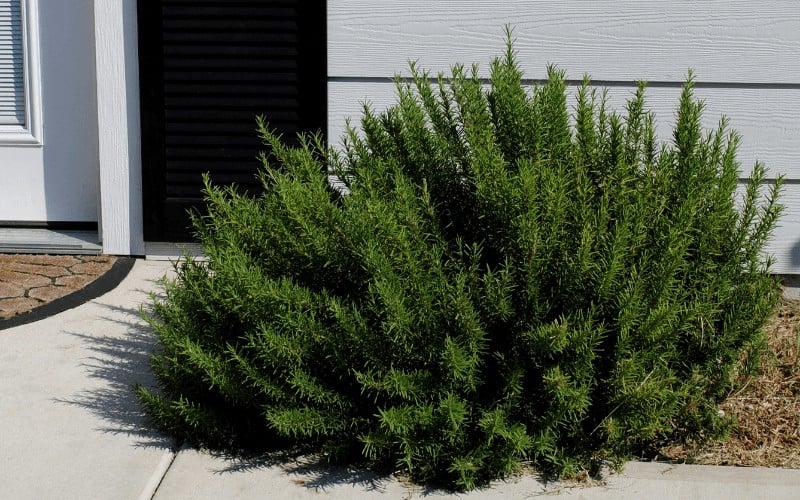Rosemary (Rosemarinus Officinalis) plant is a fragrant evergreen medicinal plant whose origin could be traced to the Mediterranean. The Rosemary Plant is a perennial plant that can live for more than two years.
Its usefulness has made it unique amongst other plants as it can be used for many purposes, such as a culinary condiment, making body perfumes and of course, most importantly, it has amazing health benefits.
However, this wonderful rosemary plant is not shielded against common problems known to affect garden plants.
This is why today’s guide decides to focus on how to save a dying rosemary plant.
Table of Contents
Can a Dying Rosemary Plant Be Revived?
Can a rosemary plant be revived? Yes, it can be revived just like the way you do for other plants. There are no special skills you must acquire before you can revive your dying rosemary plant.
Good enough, you do not also need to hire a professional gardener or a horticulturist.
It is what you can do on your own- do it yourself (DIY)
All you need is for you to follow the guides provided in this article and you would discover that reviving a dying rosemary plant is not so difficult and you don’t have to empty your pocket as well.
If you notice your rosemary plant wearing an unhealthy look different from how it should look, there could be several factors responsible for it.
However, this must be after you are certain that you have certified its growing conditions as peculiar to the Mediterranean, and with much importance to enough sun, good soil pore space, and not regular watering.
How To Save a Dying Rosemary Plant

Here are some of the steps you can take to save your dying rosemary plant and bring it back to life:
1. Rosemary with root rot
Common symptoms of rosemary with root rot often appear to look wilted or drooping with leaves that turn brown, yellow, or black.
The likely cause of root rot of rosemary could be over-irrigating, excess rainfall, poorly draining soil, and or high humidity.
Solution
Cut off parts with root rot; replant the rosemary in a new pot (repotting of rosemary), expose to full sun, unlike the Japanese maple tree which does not need excess sunlight.
You can also take cuttings of the dying rosemary for propagation as one of the ways to achieve a reasonably high success rate on how to propagate rosemary plants.
2. Rosemary with stunted growth
If you notice your rosemary is not growing well as expected, then it's probably suffering from stunted growth. Some of the likely causes could be that it is not in full sunlight or it has been pot-bound.
This is what happens when rosemary is potbound; even though the rosemary plant is known to thrive significantly in poor soils and is rarely affected by insufficient nutrients, it can become root bound if it exhausts the potting soil and its nutrients if left for long in the same pot.
Solution:
- Repot rosemary in a new pot larger than the existing one (about 17inches across). Ensure it is 20% sand and 80% compost
- In the case of a smaller pot where it is deprived of nutrients, application of a weak fertilizer in the spring can help
- Prune for leaves for culinary purposes during spring or summer and to early Fall
Note: Please ensure you do not over prune the rosemary down to the woody base because older stems do not grow new foliages.
3. Yellow leaves and scanty flowers
Why is my rosemary turning yellow? One of the causes of rosemary turning yellow and scanty flowers is due to excess nitrogen as a result of rich soils.
Or it can also be too much fertilizer. Once this happens, it would be noticeable on the leaves and bloom.
Excess nitrogen can burn the roots thereby turning the leaves yellow which can lead to a reduction in the aroma and its culinary value.
Excess nitrogen will only stimulate foliage growth but without much taste and this would be at the disadvantage of the flowers
Solution:
- Reduce frequent application of fertilizer if you are consistently doing so
- Aerate the soil around roots using a fork if the rosemary is in the ground and is already established. Doing so will help distribute sand around its base to will improve the soil structure.
- It is good to amend the soil with a sandy soil mix of 20% and 80% compost. This formulation is best on how to repot a rosemary plant.
Here are some of the basic things you need for reviving a rosemary plant:
- Light
- Water
- Fertilizer (compost)
- Soil
- Temperature and Humidity
- Garden fork
- Pot
Recommended Posts:
- How To Pick Rosemary Plant
- How to Get Root Bound Plants Out Of Pots
- What Happens If You Cut The Roots Of a Plant?
- Can a Broken Tree Branch Grow Roots?
Conclusion
How to save a dying rosemary plant is not difficult as you must have learned in the article. You just need to follow the guides provided on how to revive a dying rosemary plant.
Rosemary has high economic value. Therefore, it should not be left to die like a common plant. It should be propagated in as many ways as possible.
Again, here is why you need to revive your rosemary plant:
- Rosemary with root rot
- Rosemary with stunted growth
- Yellow leaves and scanty flowers
So next time you notice these on your rosemary plant, endeavor to replicate the steps provided.




